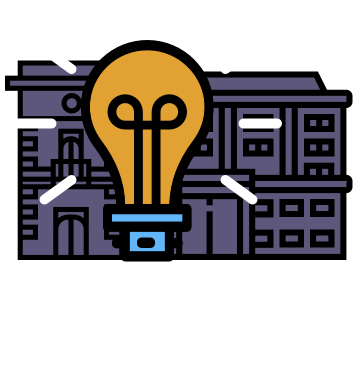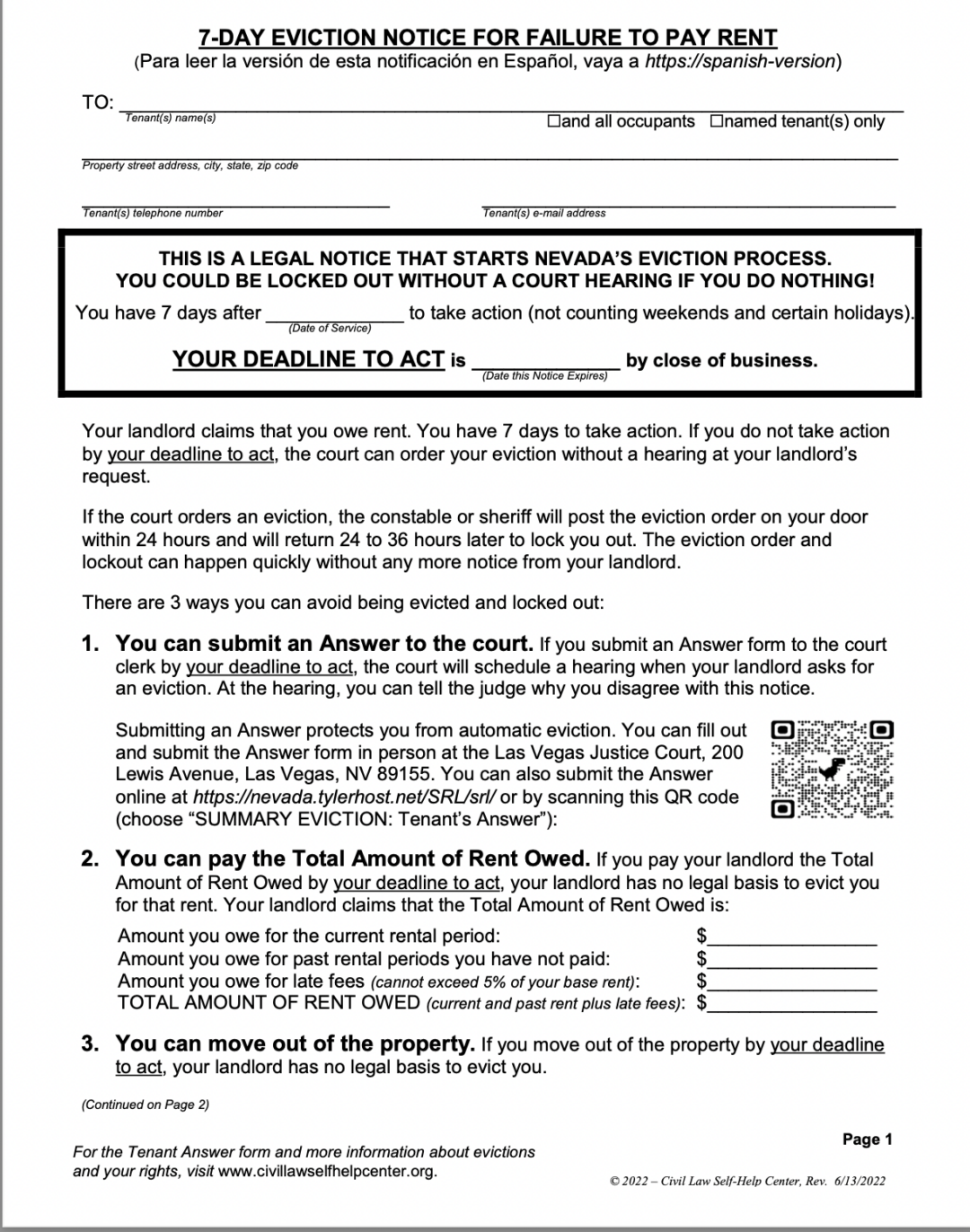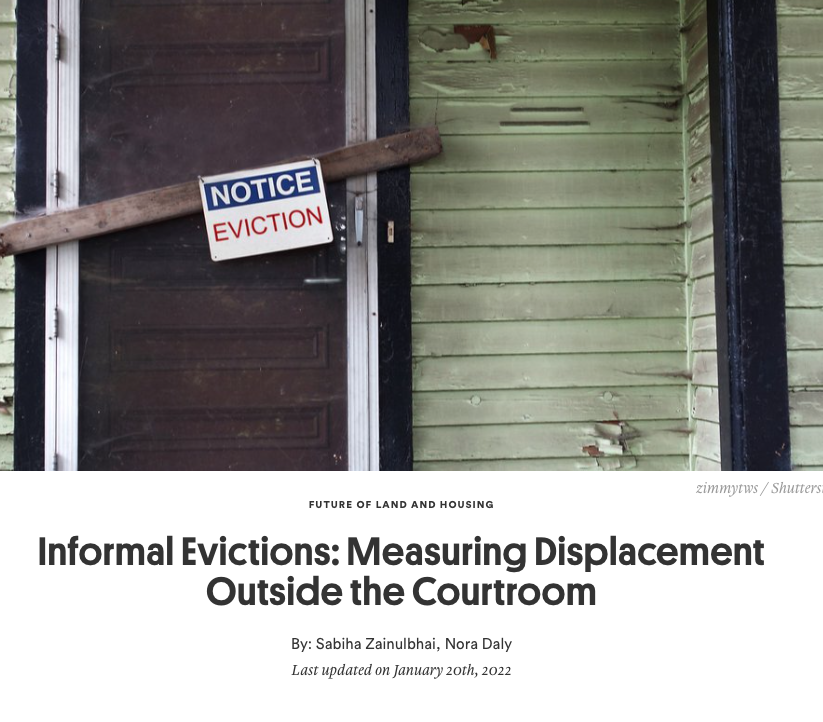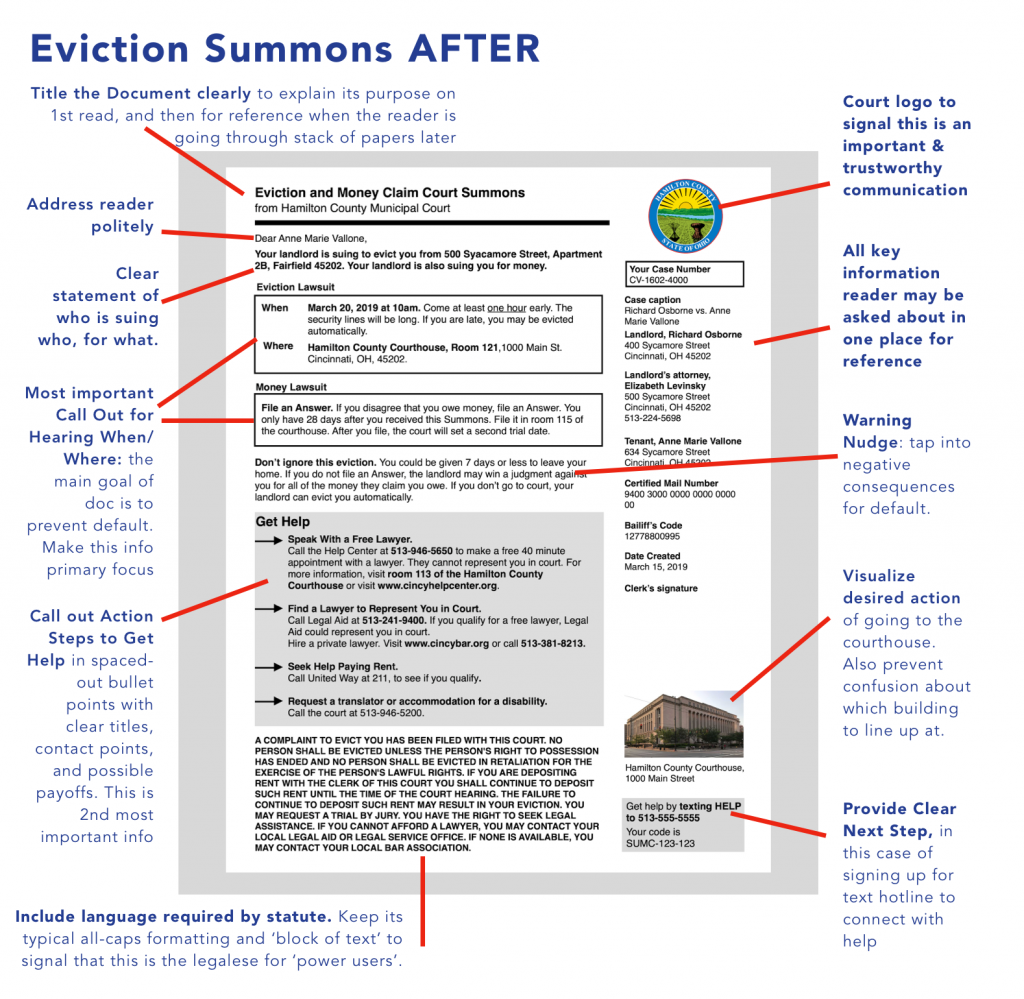
Basic Information
During 2019, civil justice groups in Hamilton County, Ohio (the Cincinnati area) worked with the Stanford Legal Design Lab to improve the Summons document that the court clerk sends out to tenants who have been sued for eviction. The court will be piloting this new Summons design in a randomized control trial to see how it might improve uptake of services and appearance rates at hearings. If you are interested in doing a similar redesign of the Summons document, please be in touch!
Also, you can adapt this summons as a template to use in your own court. Find the Canva template here, in which you can take the design we made & adjust to your own jurisdiction.
Program Name
Eviction court summons redesign
Short Description
The Hamilton County Clerk of Court’s office, working with the Hamilton County Municipal Court’s Help Center (affiliated with the University of Cincinnati) and Stanford University’s Legal Design Lab, to redesign the official Summons document that tenants receive when the landlord has filed a lawsuit to evict them.
The new Summons is intended to be more user-friendly, understandable, and actionable for tenants. It provides explicit connections to legal and financial assistance, and connections to technology-based assistance.
Location
Hamilton County, Ohio (Cincinnati, OH)
Duration
The new Summons will be launched in 2020.
Funding
The major cost has been staff time of the affiliated groups, in order to design the new document, test it with users and experts in the community, and implement the changes in the clerk’s office.
Size (number of beneficiaries)
Once the Summons is launched, this number will be updated.
Stakeholders
Who designed and set up the program?
Hamilton County Clerk of Courts’ office, under the leadership of the elected clerk Aftab Pureval
Hamilton County Municipal Court’s Help Center, under the leadership of attorney Rob Wall
Stanford Legal Design Lab’s team of lawyers, law students, and designers
Who runs and manages the program?
The Hamilton County Clerk of Courts
Who funds the program?
The Hamilton County Clerk’s office has supported staff time to help in the design, testing, and implementation of the new Summons form.
Intended Beneficiaries: Who does the program target?
The program targets all tenants who have been sued for eviction, with the goal of informing them as quickly and effectively possible about the court process; when and where to go to avoid a default judgment; and how to seek legal help, financial assistance, and planning in order to best protect themselves.
The original Eviction Summons
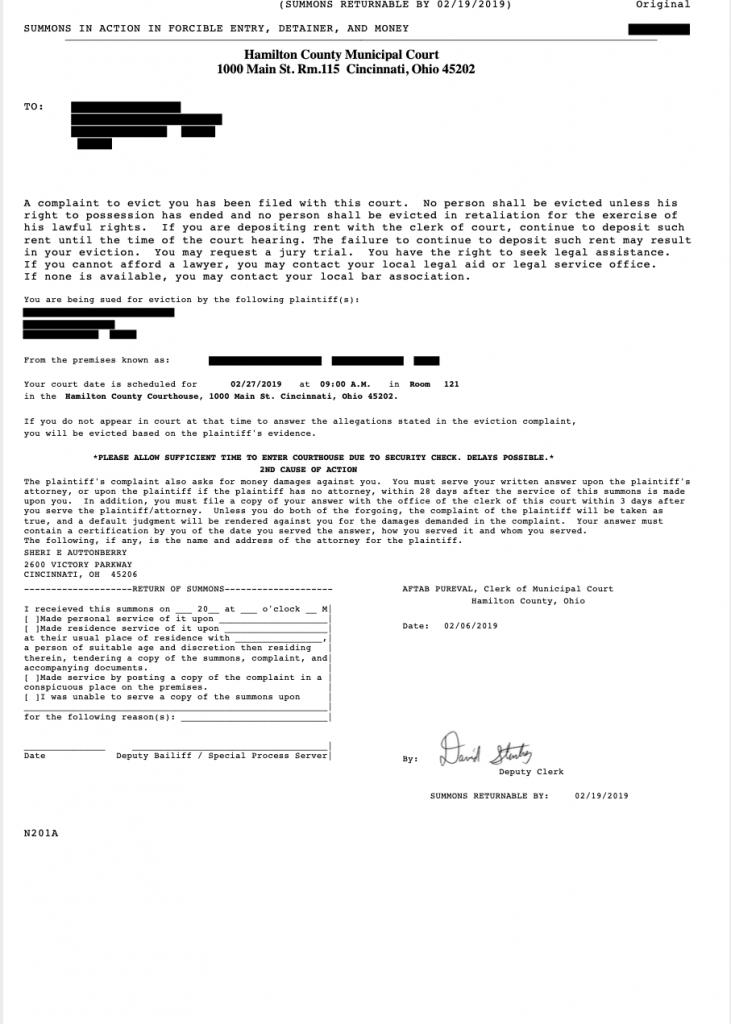
The redesigned Eviction Summons
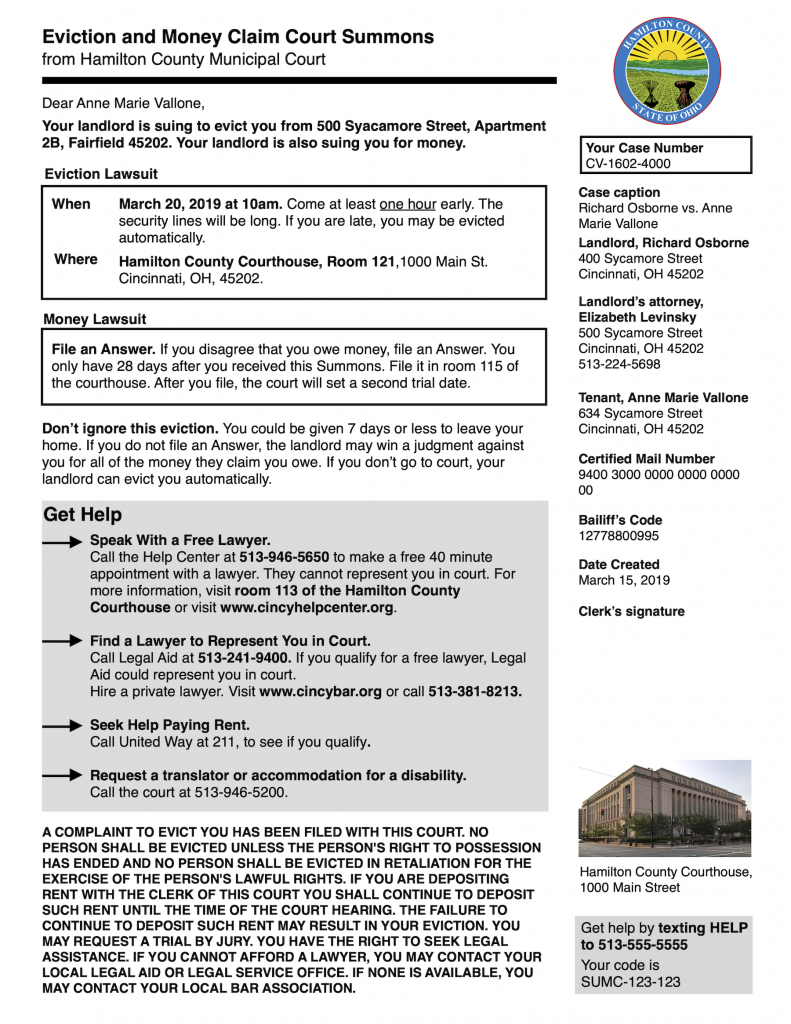
Program Details
How does the program work? What are the typical paths of action that the beneficiary + the service-provider take?
When the landlord files an eviction action in court, they are obliged to notify the tenant about the lawsuit.
The court plays a part in this notification — by generating a Summons document that accompanies a Complaint document. The Summons describes when and where the tenant should go for the upcoming hearing on the lawsuit. The Complaint describes what the lawsuit is about.
The tenant should receive the Summons and Complaint soon after the lawsuit is filed, with approximately 2 weeks before the hearing will happen.
The court takes the information that the landlord (and their attorney) submitted with their lawsuit, and uses that along with court scheduling information to generate the Court Summons.
Ideally, the tenant will receive the Summons promptly and then use this document to start planning about if and how they’ll respond to the lawsuit, and where they can get assistance to be prepared.
The tenant can reach out to the legal aid office, emergency rental assistance line, and the court help center with the “Get Help” info the new Summons provides.
They can also text in to the phone number that the Summons provides, to get direct links to the resources.
The Summons ideally will ensure that the person comes to the right court building, at the right time, with the right materials to attend their hearing and avoid a default judgment (in which the landlord would automatically be given everything they request).
What assets can be shared for others to use?
The team is happy to share the final Summons design as .pdf and as .png static documents, or the raw design file that was made using a vector-based software program Sketch.
Evidence Base
What are the plans for monitoring and evaluation?
The new Summons’ effectiveness will be studied by the courts in partnership with the Stanford Legal Design Lab. On its initial release, a random group of litigants will be sent the new Summons and the rest will be sent the old Summons.
The court and Help Center will then track any differences in the outcomes for these two different groups.
- Do the people with the new Summons appear in court at a higher rate, avoiding default judgments?
- Do they come to the Help Center for assistance?
- Do they reach out to legal aid for assistance?
- There will also be a follow-up text message based survey for all those who do come into the Help Center, to ask them if they are still in their home after the court case ends.
Have any evaluations been conducted so far?
The new Summons was designed through several rounds of collaborative workshops with tenants, advocates, legal aid lawyers, court officials, and others interested in eviction. This included prioritizing what information to include, deciding what layout and presentation was most effective, how to phrase the messages, and what services to offer on the document.
It was then tested with tenants, to determine if they could understand the language and what next steps they would take if they received this.
This feedback was all instrumental in drafting the new Summons and refining its presentation to be as accessible and clear as possible.
Contact and Follow-Up Info
Program Website
None at this time.
Documentation + Links
Use this Canva template to make your own version of the Summons for your own court.
Point of Contact for more information
Margaret Hagan, Stanford Legal Design Lab, mdhagan [at] stanford [dot] edu
